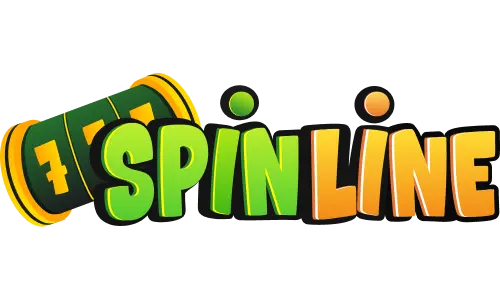Introduction: Understanding Minimum Withdrawal Limits in Casinos
When playing at online casinos, one of the most common terms players encounter is the 'minimum withdrawal limit.' This refers to the smallest amount you’re allowed to cash out from your casino account in a single transaction. As simple as it sounds, the minimum withdrawal limit is a strategic tool that casinos implement for several important reasons. In this article, we’ll explore why casinos love minimum withdrawal limits, how these limits affect both the casino and the player, and what you should watch out for before making your next withdrawal request.
What Are Minimum Withdrawal Limits?
Minimum withdrawal limits are set by casinos to define the lowest amount a player can withdraw at one time. For example, a casino might require that you withdraw at least $20. If your balance is below that, you’ll need to keep playing or deposit more to reach the limit. These thresholds vary between casinos and can depend on several factors, including payment methods, the casino’s policies, or even regional regulations.
Common Minimum Withdrawal Amounts
Most online casinos set minimum withdrawal limits between $10 and $50, though some may be higher or lower depending on the platform and the chosen payment method. Cryptocurrency withdrawals, for example, might have different minimums compared to traditional debit or credit card withdrawals due to transaction fee structures and network costs.
Why Do Casinos Set Minimum Withdrawal Limits?
The main keyword, 'minimum withdrawal limits,' is central to understanding casino operations. Casinos love these limits for a variety of business, operational, and psychological reasons.
1. Reducing Transaction Costs
Every financial transaction—especially withdrawals—incurs costs for the casino. Payment providers charge fees for processing each withdrawal, regardless of the amount. By setting a minimum threshold, casinos limit the number of small transactions, helping to keep operational costs in check. This is particularly relevant for casinos with a large player base making frequent withdrawals.
2. Encouraging Continued Play
Minimum withdrawal limits are also a clever way to keep players engaged. If you haven’t met the withdrawal threshold, you’re more likely to continue playing in hopes of reaching that magic number. This increases the likelihood that players will place more bets, potentially losing a portion of their balance back to the casino. In other words, minimum withdrawal limits promote player retention and increase the casino’s revenue over time.
3. Preventing Fraud and Money Laundering
Casinos are subject to strict anti-money laundering (AML) regulations. Allowing frequent, small withdrawals can make it easier for bad actors to move illicit funds through the casino’s system. By enforcing minimum withdrawal limits, casinos add an extra layer of security, making it more challenging for fraudulent activities to go undetected.
4. Streamlining Payment Processing
Managing a high volume of small withdrawals can bog down a casino’s payment processing systems. By consolidating withdrawals into larger transactions, casinos can streamline their operations, reduce administrative burdens, and ensure smoother payment experiences for both players and staff.
How Minimum Withdrawal Limits Impact Players
While minimum withdrawal limits have clear advantages for casinos, they also impact the player experience in several ways. It’s important to understand the implications before you start playing or attempt to cash out your winnings.
Withdrawal Delays and Frustration
If your balance is below the minimum withdrawal limit, you may have to keep playing or make additional deposits to reach the required amount. This can be frustrating, especially for casual players who enjoy low-stakes games and may not wish to risk more money. Some players end up abandoning their small balances, which ultimately benefits the casino.
Bankroll Management Challenges
For players who carefully manage their gambling budgets, minimum withdrawal limits can make it more difficult to stick to a financial plan. If you can’t withdraw small winnings, you might be tempted to play longer than intended, increasing the risk of losses.
Transparency and Trust Issues
Some casinos are upfront about their minimum withdrawal policies, while others may bury the details in the fine print. Lack of transparency can lead to a breakdown in trust between the player and the casino. It’s essential for players to read the terms and conditions before depositing money to avoid unpleasant surprises later.
Are Minimum Withdrawal Limits Always a Bad Thing?
While minimum withdrawal limits can be frustrating, they’re not always negative. In fact, they can serve a legitimate purpose for both casinos and players.
Protecting Players from Excessive Fees
Some payment methods, especially international bank transfers or cryptocurrencies, come with sizable transaction fees. By setting a minimum threshold, casinos can help players avoid paying a disproportionate amount in fees relative to their withdrawal amount. For example, withdrawing $5 via a method that charges a $3 fee doesn’t make sense for most players.
Encouraging Responsible Gambling
Minimum withdrawal limits can also encourage players to plan their sessions more thoughtfully. By aiming for a specific withdrawal target, players might set more realistic goals and play with greater discipline.
How to Navigate Minimum Withdrawal Limits as a Player
The best way to avoid issues with minimum withdrawal limits is to be proactive and informed. Here are some tips for players at online casinos:
1. Check Withdrawal Policies Before Depositing
Always review a casino’s payment and withdrawal policies before making your first deposit. Look for information about minimum and maximum withdrawal amounts, processing times, and any associated fees.
2. Choose the Right Payment Method
Some payment options have lower minimum withdrawal limits or faster processing times. E-wallets and cryptocurrencies often provide greater flexibility compared to traditional banking methods.
3. Track Your Balance and Plan Withdrawals
Keep an eye on your account balance and try to plan your withdrawals in advance. If you’re close to the minimum limit, consider whether it’s worth playing a bit more or waiting until you reach the threshold.
4. Read the Fine Print on Bonuses
Bonuses and promotions can impact your withdrawal eligibility. Some casinos require you to meet wagering requirements before you can withdraw bonus winnings, and these amounts may be higher than the standard minimum withdrawal limit.
The Future of Minimum Withdrawal Limits
As the online gaming industry evolves, so do payment technologies and player expectations. Some casinos are beginning to lower their minimum withdrawal limits to attract more players, while others are sticking to traditional models to maintain profitability. Regulatory trends and competition will continue to shape these policies in the coming years.
Conclusion: Play Smart and Stay Informed
Understanding why casinos love minimum withdrawal limits can help you make smarter decisions as a player. While these limits are designed to benefit casino operators, they also serve practical purposes for both security and financial management. Always check withdrawal policies before you play, and plan your sessions with these limits in mind. Have you ever been caught out by a minimum withdrawal limit? Share your experiences and tips in the comments below!




